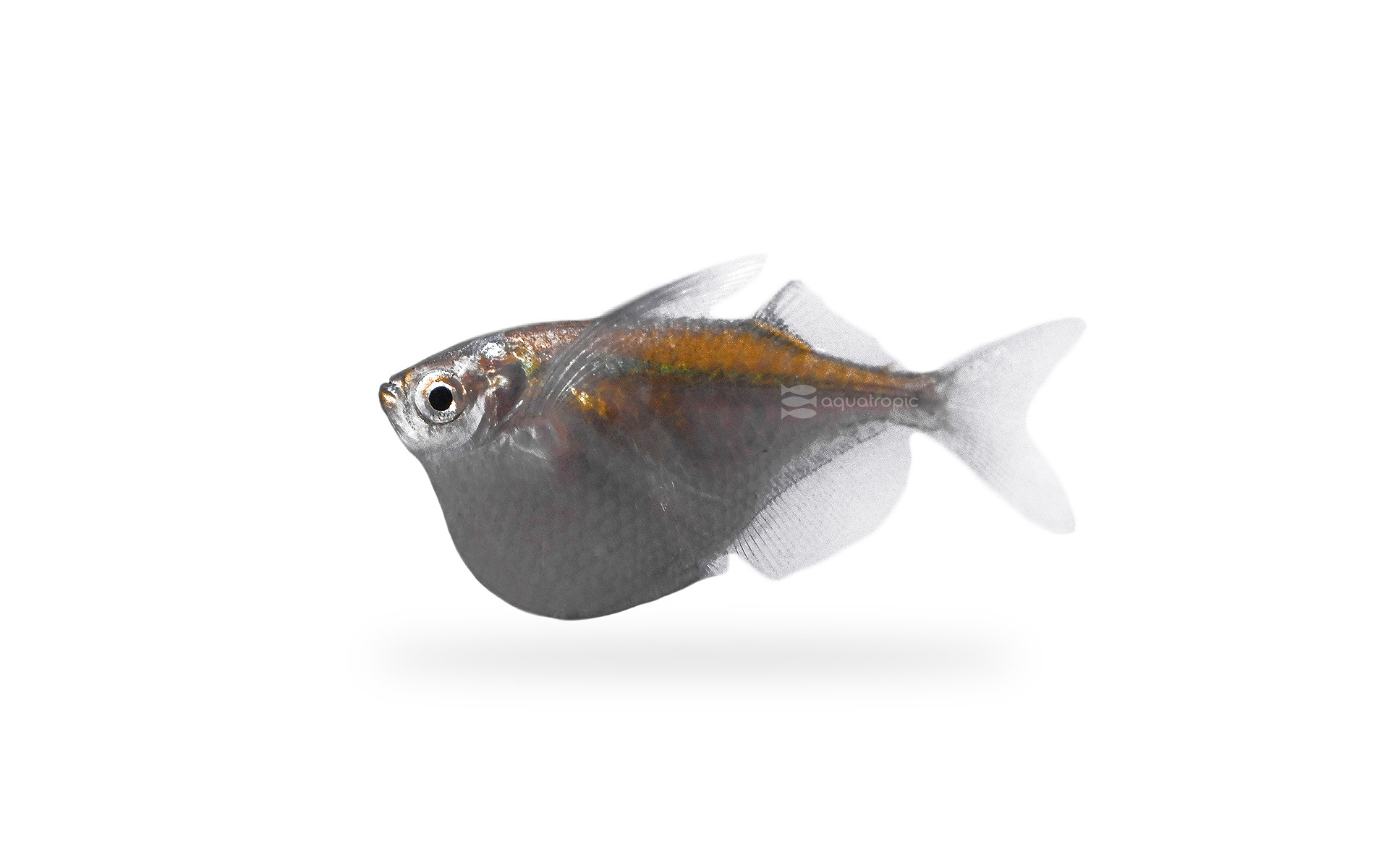The Fantastic Flying Hatchets

The fish most commonly known as the Platinum Hatchetfish in the United States is Thoracocharax stellatus. Other English names are the Spotfin Hatchetfish and, erroneously, the Silver Hatchetfish, which is actually another species, Gasteropelecus Sternicla. These two are very similar in appearance, though the adult Platinum Hatchetfish can be differentiated easily by the black spot on its dorsal fin. Most of the native range of Thoracocharax stellatus is in Central and South America where the native languages are Spanish and Portuguese. Some common names there are Pechito (chest), Volador (flying) Perchito Plateado (silver perch) and Machadinaha (hatchet).
All these names are pretty obvious references to the color and shape of the Platinum Hatchetfish, with the exception of “Volador” which is a Spanish language common name for Thoracocharax stellatus in Ecuador. The reason it is called “flying,” is based on this fish's particular ability to jump incredible distances out of the water when startled; there are reports of them jumping distances described as “several yards!” It was once thought that this fish actually beat its pectoral fins while in the air as if they were wings. This has been debunked over time, but the behavior itself is no less impressive. This ability is also used to harvest terrestrial (land) insects from riparian (next to water) plants! Apparently though, this amazing ability comes at a price. The physical exertion of it seems to limit Thoracocharax stellatus to being capable of doing it only a few times in a row before needed to recharge.
Obviously, any fish that can jump like this needs a display that is covered. While the jumping behavior happens much less in a captive environments that often lack the kind of threats a fish needs to escape, they do still jump occasionally. In our holding system here, this tank is always covered. Aquarists interested in having Hatchetfish should always keep a minimum of six together in any display and the more the merrier. Thoracocharax stellatus does not do well when kept in smaller groups. A 55 gallon aquarium is a good size recommendation for 8-12 of them.
They are a very peaceful fish, and can be kept with mellow fish, including other hatchet fish. They do very well with other species that utilize zones lower in the aquarium, like Earth Eater Cichlids, Plecos, or Corydoras near the bottom etc. Avoid overly boisterous tankmates, especially those that share the same aquarium zone. Displays can be planted, or heavy to driftwood and sand. Thoracocharax stellatus will appreciate cover, but also likes to swim around under the brighter portions of the tank, juveniles will spend the bulk of their time shining in the sun.
In the wild, their diet is nearly 100% made up of insects, with the majority of the insects being ants, beatles and other bugs that either fall into the water or can be eaten off leaves next to the water. As a fish that generally stays very high in the water column, they do best with floating or slowly sinking foods, these foods also best mimic the behavior of their natural food sources. These pellets or flakes can be supplemented with black and bloodworms, and small shrimps for varied nutrition.
The Platinum Hatchetfish can be bred and raised in captivity, though they are terrible parents. This is not the easiest fish to spawn for home hobbyists, but it is possible. For some, this makes the challenge more appealing. Small species specific groups of mixed sex fish will work best, males tend to be smaller and females tend to be bigger / rounder. Feed a high protein diet, leave open space and cover filter inlets with sponge to ensure eggs / fry don't get swept away. We suggest removing the fry to be able to better tend to them. There are a few articles and videos circulating the internet for more complete instructions on rearing fry.
The Platinum Hatchetfish, is an amazing upper column schooling fish for both species specific and passive community tanks. Their intense silvery coloration and tight groups and a lot of visual interest to amazonian and planted displays alike. They are challenging and thus rewarding to breed in the home aquarium and are generally very hardy once settled in. If you're interested in keeping this amazing fish, ask your Local Fish Store about sustainably sourced, or aquacultured Platinum Hatchetfish from Aquatropic today!